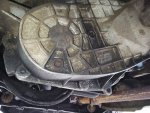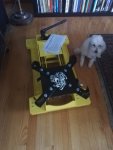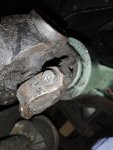RJMacReady
Well-Known Member
- Joined
- Oct 7, 2020
- Messages
- 67
- City
- Seattle
- Vehicle Year
- 1984
- Engine
- 2.3 (4 Cylinder)
- Transmission
- Manual
I've been asking questions in a few different threads, I'm going to keep them in one thread here where I'll detail my attempt to change my clutch. A huge adventure for a very simple man. I'm going to get some good pictures of everything disassembled and see if I can figure out what the other issues are while I have things apart.
About the thread title. Yeah, I did my first oil change today! I went slow and step by step from my Haynes manual. Drain plug came out really easy, and the even the oil filter was easy to take off. Manual said to put in 4 quarts, but I thought it was low on the dipstick so I actually put in about 5. Looked at the dipstick again and realized I wasn't reading it right because my oil was actually clear now ...Drained a little more out and then started the engine.
...Drained a little more out and then started the engine.
Starting was fine, I ran it for a few minutes, then checked the dipstick again. Filled a little more to bring it between ADD and SAFE, and things seemed good.
BUT, when I went to take a little lap around the block, I let out my clutch to go into reverse and it made an unusual and loud noise. It also did not "bite" at all. I'm pretty sure it got fluid on it and started slipping.
* Checking around my oil filter, there was no leaking oil.
* I'm pretty sure I didn't spill any oil when pouring into the top of the engine.
* Before I touched anything today, I noticed that at the bottom of the bell housing there were drips of oil. I figured that this means my rear main seal is leaking.
So, I've got a clutch kit. I already have a rear main seal kit because I was figuring I should do it while I'm under there. My transmission slimey, and my transfer case looks like its gasket is really blown out and may be leaky as well. The whole thing needs a good going over. We'll see how far I can get with books, internet, and too much time on my hands.
Attaching some pics.
About the thread title. Yeah, I did my first oil change today! I went slow and step by step from my Haynes manual. Drain plug came out really easy, and the even the oil filter was easy to take off. Manual said to put in 4 quarts, but I thought it was low on the dipstick so I actually put in about 5. Looked at the dipstick again and realized I wasn't reading it right because my oil was actually clear now
Starting was fine, I ran it for a few minutes, then checked the dipstick again. Filled a little more to bring it between ADD and SAFE, and things seemed good.
BUT, when I went to take a little lap around the block, I let out my clutch to go into reverse and it made an unusual and loud noise. It also did not "bite" at all. I'm pretty sure it got fluid on it and started slipping.
* Checking around my oil filter, there was no leaking oil.
* I'm pretty sure I didn't spill any oil when pouring into the top of the engine.
* Before I touched anything today, I noticed that at the bottom of the bell housing there were drips of oil. I figured that this means my rear main seal is leaking.
So, I've got a clutch kit. I already have a rear main seal kit because I was figuring I should do it while I'm under there. My transmission slimey, and my transfer case looks like its gasket is really blown out and may be leaky as well. The whole thing needs a good going over. We'll see how far I can get with books, internet, and too much time on my hands.
Attaching some pics.
Attachments
-
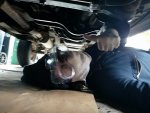 IMG_20210307_133615.jpg137.5 KB · Views: 136
IMG_20210307_133615.jpg137.5 KB · Views: 136 -
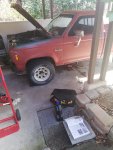 IMG_20210307_142715.jpg155.1 KB · Views: 155
IMG_20210307_142715.jpg155.1 KB · Views: 155 -
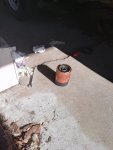 IMG_20210307_142726.jpg125 KB · Views: 125
IMG_20210307_142726.jpg125 KB · Views: 125 -
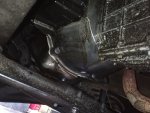 IMG_20210307_151536.jpg169.8 KB · Views: 155
IMG_20210307_151536.jpg169.8 KB · Views: 155 -
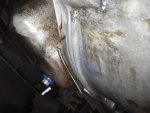 IMG_20210307_151546.jpg138.5 KB · Views: 128
IMG_20210307_151546.jpg138.5 KB · Views: 128 -
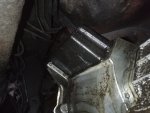 IMG_20210307_151553.jpg153.8 KB · Views: 150
IMG_20210307_151553.jpg153.8 KB · Views: 150 -
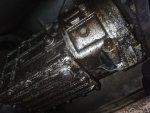 IMG_20210307_151559.jpg222.8 KB · Views: 126
IMG_20210307_151559.jpg222.8 KB · Views: 126 -
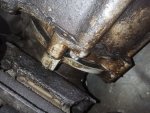 IMG_20210307_151607.jpg232.1 KB · Views: 142
IMG_20210307_151607.jpg232.1 KB · Views: 142

